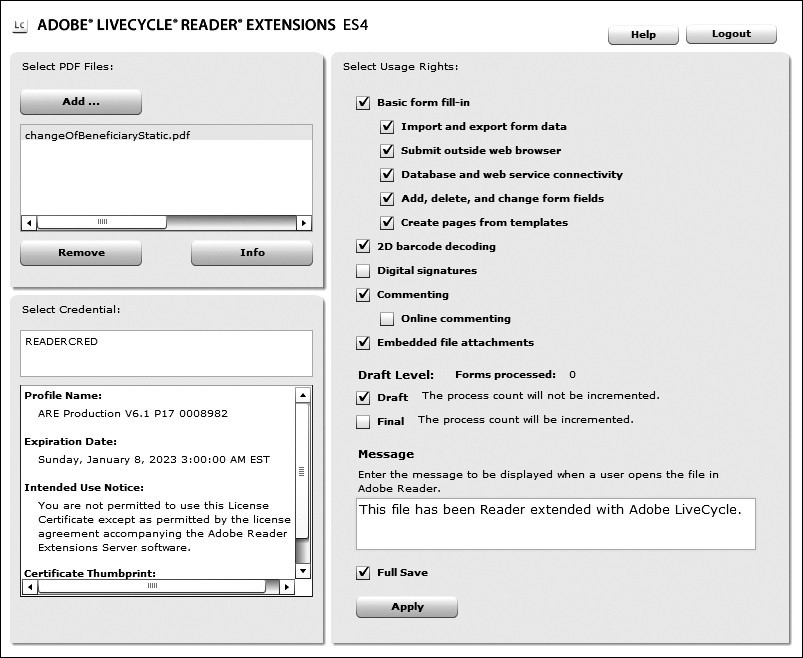Without an activation, Adobe Reader only allows limited functionality, such as editing, viewing and printing PDF documents.
Other functions such as the processing of digital signatures, dynamic 2D barcodes, web service calls and more can only be used if the documents have been specially extended for this purpose (or the user processes the PDF document with the paid Adobe Acrobat DC Pro).
During the so-called unlocking process, a data structure is embedded in the PDF that contains the activated functions and also an RSA signature.
Until now, users had the option of running an AEM Forms Server (formerly LiveCycle / ARES). Via a web interface (based on Adobe Flash Player), a user could upload the corresponding PDF documents and select the desired activations via checkboxes.

Adobe Flash Player End of Life
What does this mean and what are the implications for Adobe Reader Extensions?
Adobe Flash Player will no longer be supported as of December 31, 2020. In the past, the Flash Player was built into many software solutions from Adobe, such as Adobe LiveCycle or the successor product "AEM Forms (JEE)". For example, the Adobe LiveCycle Reader Extensions user interface was based on Adobe Flash technology.
What now? How can I continue to access the Reader Extensions features and what is required to do so?
To dive a little deeper into the topic, let's first explain what the Adobe Reader Extensions are (formerly also known as ARES) and what they do.
Adobe Reader is a stripped down version of the paid Adobe Acrobats. However, Adobe Reader has many features that are disabled for now. If organizations want to use these disabled features, a certificate must be embedded in a PDF document to enable these features in Adobe Reader.

The end of life of the Adobe Flash Player means that it is now a security risk and should be uninstalled immediately.
How do I enable the Reader Extension functions for my documents in the future?
One thing should be said in advance. PDF documents can still be extended via Reader Extensions. There are two ways to do this:
1. You develop a new process that accepts and extends the PDF documents. We can help you with this.
2. if you don't want to host a Reader Extensions Server yourself, we can offer you the activation as a service. In this case, we offer you the option of having your forms activated via our automated Adobe Reader Extensions server. The process after setup is simple and straightforward.
All you have to do is send an e-mail to our automated service with the PDF documents to be extended attached. You will then receive the PDF document with the Reader Extensions attached, based on your license certificate, by e-mail. This requires an existing AEM Forms license or a current Adobe maintenance contract for the software license. Your advantage is that this eliminates the need to operate and maintain your own AEM Forms server.
If you are looking for a way out of this situation and would like to continue using Adobe Reader Extensions, please feel free to contact us.

